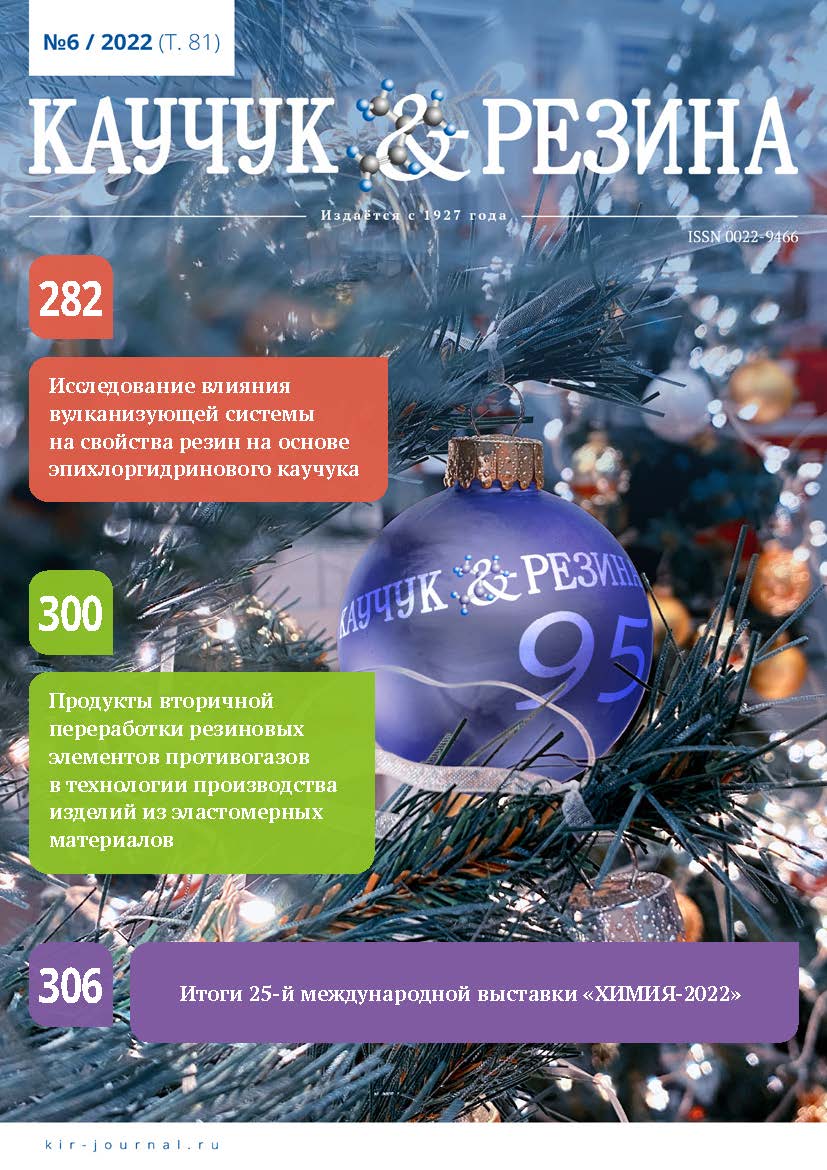Сuring System Influence on Properties of Epichlorohydrin Rubber Based Elastomers
Published 2022-12-26
How to Cite
Abstract
Effective and semi-effective curing systems influence on epichlorohydrin rubber (Nipol Hydrin® Т3000) properties was investigated. Curing process was carried out at 150 °C using MonTech MDR 3000 Professional rotorless rheometer. Crosslink density (νt) evaluation was also carried out with the same equipment. For the obtained rubbers, the network parameters were determined. For instance, numerical estimate of νt was obtained from its relationship with the dynamic shear modulus, and the density of chemical bonds. νch was determined from the data of equilibrium swelling in toluene using the Flory-Rener equation. Both mechanical and dynamic tests of rubbers were carried out and their relaxation parameters were evaluated to find correlation with cross-link net parameters. As a result of a comparative analysis of the network parameters with the properties of rubbers, it was noted that using of effective vulcanizing systems based on a combination of sulfur donors (tetramethylthiuram disulfide and N,N’-dithiodimorpholine) with a sulfenamide-type accelerator (N-oxydiethylene-2-benzothiazolylsulfenamide or cyclohexyl-2-benzothiazolylsulfenamide) allows not only to provide a long induction period, high vulcanization rate and degree of crosslinking, but also to provide a high level of elastic properties, including their saving after thermal-oxidative aging, and better dynamic and relaxation properties. Glass transition of rubbers was in the temperature range minuses 40±2 оС by differential scanning calorimetry.

